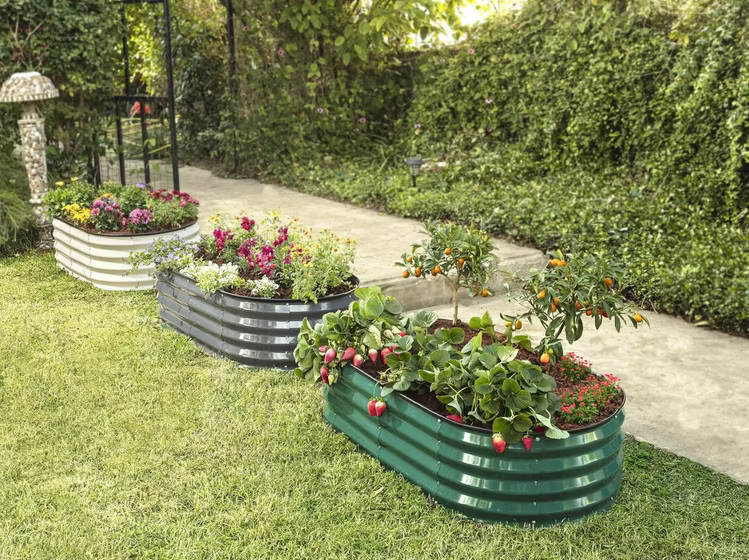Choosing the right soil for your raised garden bed is crucial to the success of your garden. The quality of the soil directly affects the growth of your plants, their overall health, and how well they produce. With so many soil types available, it can be overwhelming to determine which one will work best for your garden.
Understanding the Basics of Raised Garden Bed Soil
Raised garden beds provide a controlled environment for plants, allowing for better drainage and improved soil quality. However, choosing the right soil is essential to take full advantage of these benefits. Unlike traditional garden plots, raised beds require a special mix of soil that supports healthy plant growth.
Key Factors to Consider When Choosing Soil for Raised Garden Beds
Before you dive into purchasing soil, it's important to understand a few key elements that influence the soil’s quality and suitability for your raised bed.
1. Drainage and Aeration
Soil in raised garden beds should have excellent drainage. Good drainage prevents water from pooling around the roots, which can lead to root rot and other diseases. Additionally, proper aeration allows roots to grow deep and access essential nutrients. A soil mix with good texture and organic matter is ideal for achieving both drainage and aeration.
2. Nutrient Content
The soil you choose should be rich in essential nutrients that plants need to grow, such as nitrogen, phosphorus, and potassium. These nutrients are vital for plant health and productivity. Consider using compost or organic matter to boost the nutrient content of your soil. It’s also beneficial to select soil that is slightly acidic to neutral in pH, which is ideal for most garden plants.
3. Soil Texture
Soil texture is another important consideration when choosing the right mix for your raised garden bed. A balanced texture—neither too sandy nor too clayey—will support healthy root growth and ensure proper water retention without becoming waterlogged. A loamy soil mix, which contains a balanced ratio of sand, silt, and clay, is often the best choice for raised beds.
Types of Soil for Raised Garden Beds
Now that you understand the key factors, let’s explore the different types of soil mixes available for raised garden beds.
1. Pre-Mixed Raised Bed Soil
One of the easiest options is to buy pre-mixed raised bed soil. These mixes are formulated to provide the perfect balance of nutrients, texture, and drainage. They're convenient for beginners or those who don’t have time to create a custom mix.
2. Homemade Soil Mix
Creating your own soil mix allows you to tailor it to the specific needs of your garden. A common recipe for raised beds is the "1-1-1 mix," which consists of one part compost, one part peat moss (or coconut coir), and one part vermiculite (or perlite) for drainage. This mix provides excellent fertility and drainage.
3. Topsoil and Compost Blend
Another option is to use a blend of topsoil and compost. While topsoil provides bulk, compost adds essential nutrients and improves the soil’s structure. Be sure to select topsoil that is free of contaminants, such as weeds and debris.
Common Mistakes to Avoid When Choosing Soil for Raised Garden Beds
While choosing the right soil is important, there are also a few common mistakes you should avoid when selecting soil for your raised garden bed.
1. Using Poor-Quality Topsoil
Topsoil can be an inexpensive option, but not all topsoil is created equal. Some may contain heavy clay or be depleted of nutrients. If you opt for topsoil, make sure it’s high-quality and nutrient-rich.
2. Neglecting Drainage Needs
It’s easy to overlook drainage, but without it, your raised bed soil will become compacted and waterlogged, leading to poor plant growth. Always prioritize soil with proper drainage to ensure your plants thrive.
3. Overlooking Soil Amendments
Even the best soil mix can benefit from amendments like compost or organic fertilizers. Don’t forget to periodically amend the soil to replenish nutrients and improve structure.
Conclusion
Choosing the right soil for your raised garden bed is a critical step in ensuring the health and productivity of your plants. By considering factors like drainage, texture, and nutrient content, you can create a thriving garden that flourishes all season long. Whether you choose a pre-mixed option or create your own soil blend, make sure your raised bed is filled with soil that supports healthy growth and enhances your gardening experience. Happy gardening!







